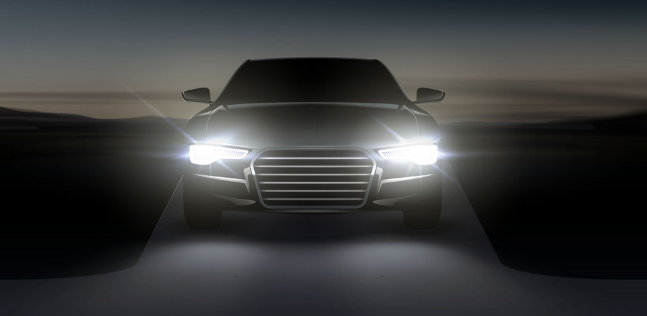Car Headlights: Explained!

Car headlights used to be a simple affair – a bulb, a reflective bowl and a glass front! With time, motorists' desire to see where they were going in the dark has led to ever more advanced car headlight technology. We've witnessed halogen, and then xenon lights emerge, and both mark major leaps forward in automotive lighting. As manufacturers searched for more energy-efficient electronics in cars, LED headlight units have become popular.
The High-intensity discharge (HID), or Xenon headlights are a bit similar to Compact Fluorescent Light bulbs (CFL) which were used in our homes. Xenon headlights require no filament; instead, they work by creating a high voltage area between two electrodes where the remaining space is filled with Xenon gas. Such bulbs take a little time to reach peak brightness as they need time to heat up, entirely. Once they reach their peak brightness, a bluish-white light is emitted. Since they take a bit time to warm up, they are usually used in conjunction with another headlight, for a high beam. The HID headlights are a lot powerful and brighter than the conventional halogen headlamps and have a throw of around 200 to 250m.
Here are the three main types of headlights used in vehicles:
Halogen
The Halogen headlights are the most common type of headlights, and you can find them in almost every car. This halogen bulb works by sending an electric pulse through the tungsten filament that is placed in a glass capsule, filled with halogen gas. It is extremely heat resistant, so once the filament is supplied with the electric current, it heats up and glows by emitting a yellow light.
LED
Light-emitting diodes or LEDs, work when electricity flows through the light-emitting diodes and the process of LEDs is comparatively simple. They don't need a warm-up time, and they don't emit heat emitted. They produce a bright light, that is energy-efficient and are easy to retrofit to any headlamp and work perfectly fine. They are available in different shapes and are capable of throwing light up to 300m ahead.
Matrix
Also known as pixel lighting, they are controlled independently, and a camera is mounted behind the inside rearview mirror that can detect any light coming from the behind. Upon the detection of a vehicle, it turns off the individual LED so that the driver of other cars is not dazzled.
Laser
Laser lights are advanced, and they are the best in class, but they come with a hefty price tag. They energize a gas by using lasers, which is why the gas glows exceptionally bright. The best part about laser lights is that their throw of the headlight is significantly better as they can illuminate about 600m of the road ahead.
With time, this technology will evolve like all else, and we can expect more innovative headlights for our vehicles in the near future!
Find out more about your car health by visiting us at LeSueur Car Company.
Keep Moving!